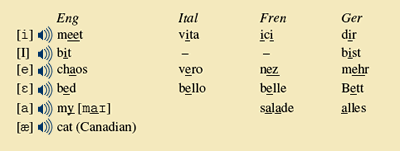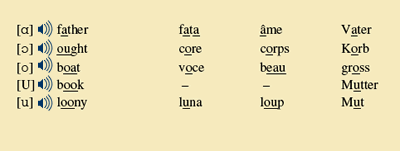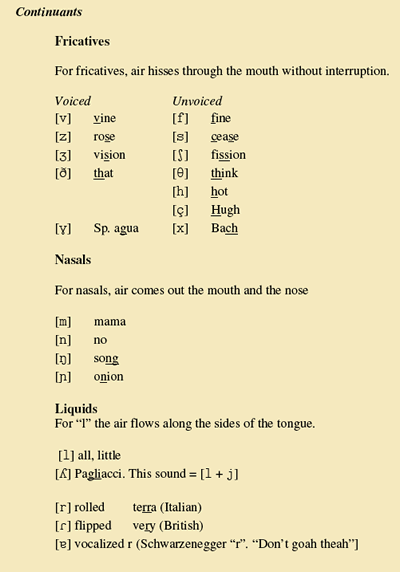


Welcome to the International Phonetic Alphabet: an alphabet of SOUNDS.
The International Phonetic Alphabet (the IPA) is a set of symbols, enclosed in brackets.
Each IPA symbol stands for ONE SOUND. There may be many different spellings for the one sound: for example:

So, in IPA:

Why is the IPA useful?
- IPA is an efficient, fairly precise shorthand
- IPA is recognized and used world-wide
- IPA acts as a constant across all the languages
- IPA is applicable to any language regardless of the spellings of each sound.
- Using IPA, the singer can identify with sound symbols all the spellings in a word
If you know the IPA, it means that you can sing in any language (like Czech) right away by consulting an up-to-date Czech dictionary and following the IPA transcriptions of the words.There are other things to learn, and IPA is not exact, but it gets you
started.
Why use an up-to-date dictionary?
Older dictionaries each had their own system of symbols to indicate how to say the words. But the IPA symbols given below are the most up-todate and the most common across all present-day dictionaries for any language.
Below you will find a listing of IPA symbols used for the sounds of Canadian English, Italian, German and French. (An IPA for each language will be posted separately.)
By the way, Canadian English vowels are not exactly the same sounds as the Italian, German, and French vowels, but the examples listed below at least give a basis for comparison.
Sounds are divided into vowels, consonants and glides.
- Vowels are sustained on an airflow which is uninterrupted.
- As a consequence, vowels have the most carrying power and audibility.
- Consonants are produced on an airflow which is interrupted, either completely as in b/p or partially as in s/z.
- For this reason, consonants like b/p are described as stops: consonants like s/z are called continuants.
- Consonants enclose the vowels and allow the listener to hear the word’s boundaries and understand the meaning.
So vowels have carrying power: consonants give meaning.
- Glides are a mixture of vowel and consonant. In glides, the airflow is constricted a little, but less so than for real consonants.
THE INTERNATIONAL PHONETIC ALPHABET (IPA)
VOWELS
Tongue Vowels
These vowels are made with the front of the tongue moving down from the top of the
mouth. Click on each vowel symbol to listen to an MP3 Audio of the sound.

Lip Vowels
These vowels are made by gradually rounding and pushing the lips forward.

Neutral Vowels
These vowels are made with the tongue and lips in a neutral position.

Mixed (French/German)
These vowels are made with the tongue position and lip position combined.

Nasal vowels (French only)
With these vowels, air comes out the mouth and the nose.

GLIDES

CONSONANTS
For voiced consonants, the vocal folds vibrate. For unvoiced consonants, the vocal folds don’t vibrate.
For stop consonants, the air stops and is then released. For continuants, the air is not
stopped.




